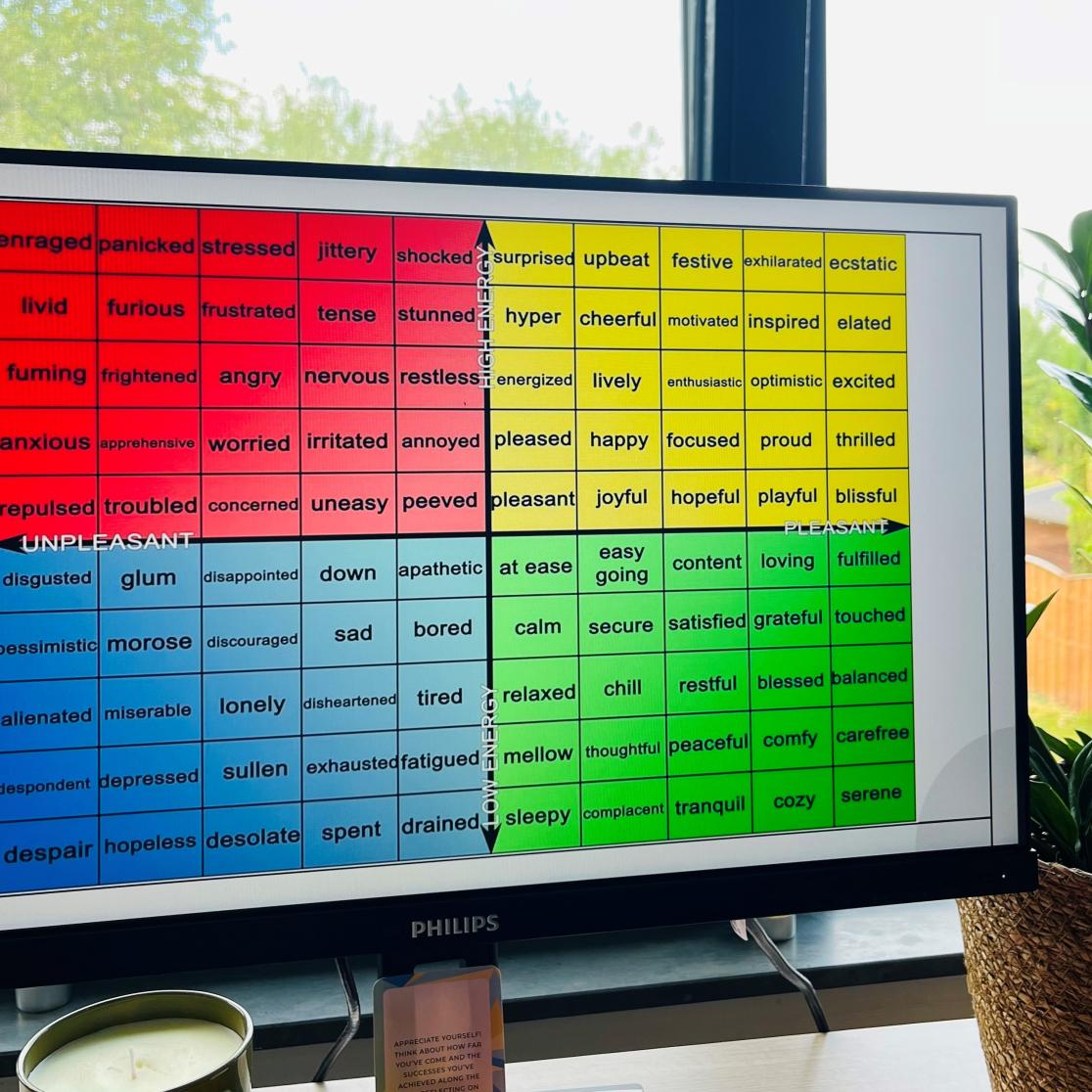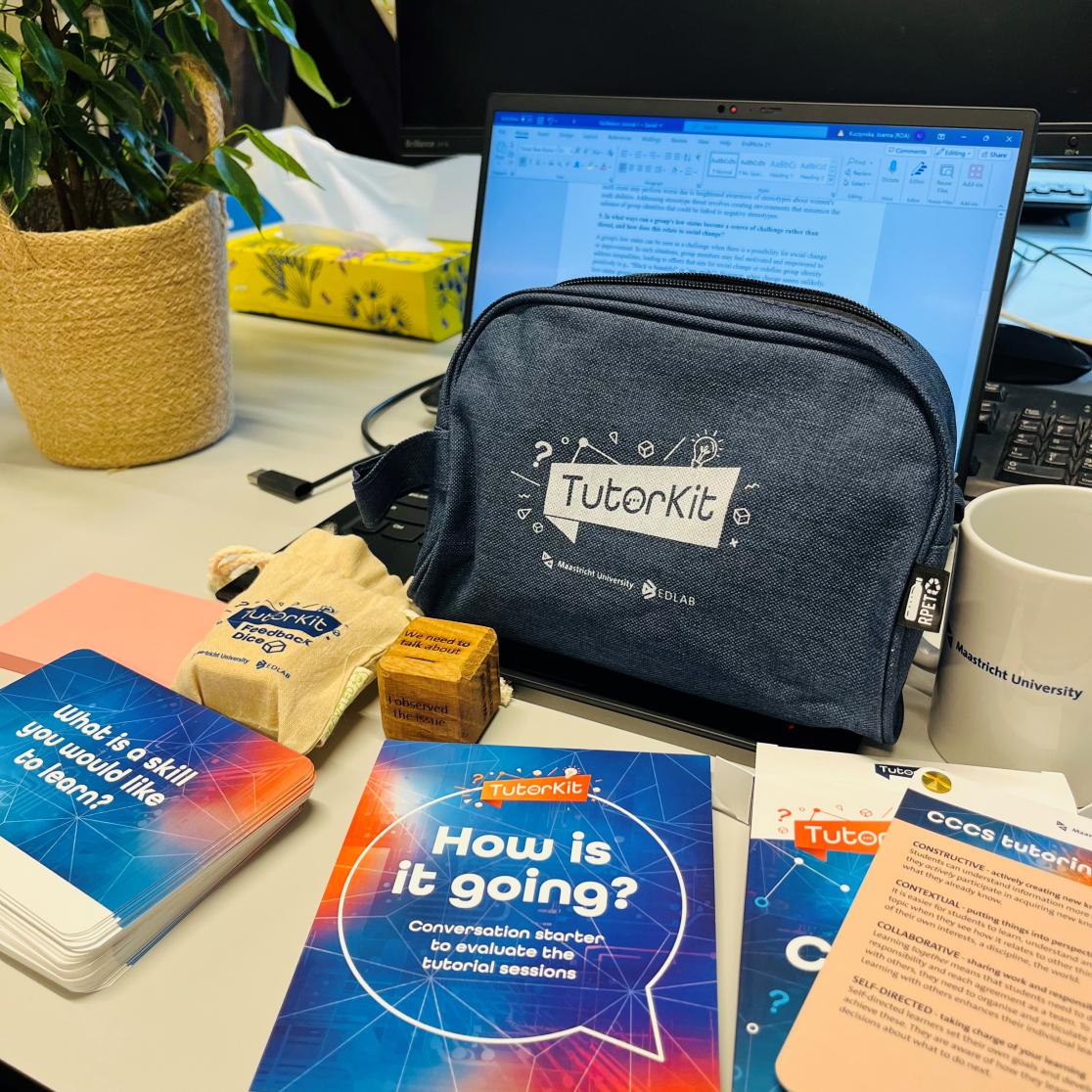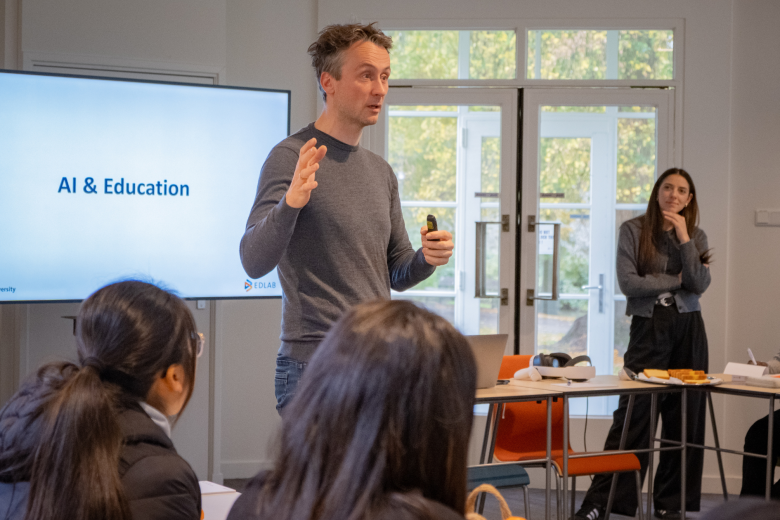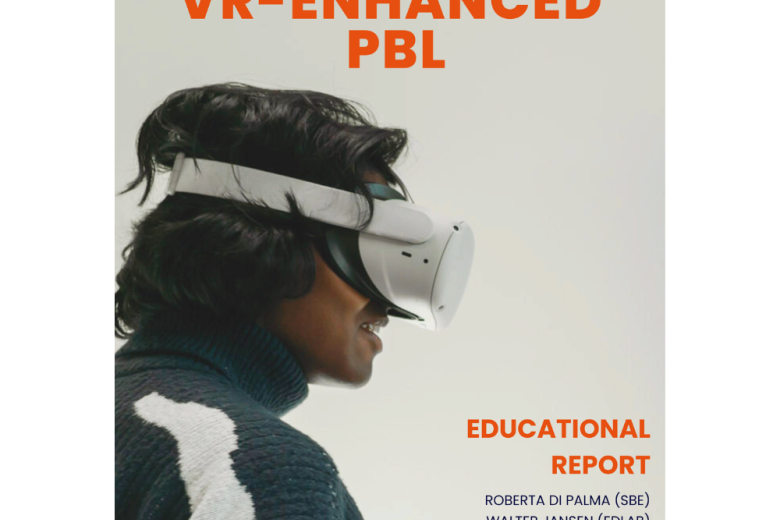Warming up the classroom: music, mindfulness, and reflection in PBL
Athletes must warm up and concentrate before any performance. Why, then, do we expect our students to instantly become active when they enter a Problem-Based Learning (PBL) session? Active participation is very important in PBL, but the atmosphere sometimes requires a small assistance for the change of gear.
Joanna Kuczyńska, a PhD Candidate in Lifelong Learning at the Maastricht University Research Centre for Education and the Labour Market (ROA), realised that students also require a "mental warm-up." She shares her own classroom experiments, using simple but effective methods – music for the mood, mindfulness for the nerves, and reflection to fix insights – which transform the experience in the tutorial and establish skills for lifelong learning.
Read her story below.
The athlete's lesson
Last year was my first time teaching in a Problem-Based Learning (PBL) setting. Even though I had nearly 20 years of teaching experience, stepping into this new format felt different – and honestly, a little awkward at first. But it also felt like the perfect playground for my experiments. As a cognitive psychologist and mindfulness practitioner, I’ve always been fascinated by how the brain learns best – how attention, emotion, and reflection interact to make learning stick. I’m also a lifelong learner myself, so I often test the same strategies I teach. In PBL, I quickly discovered a space where I could combine what I already knew about psychology with small tools like music, mindfulness, and reflection – and watch how they shaped the learning atmosphere in real time.
Sport has also always been part of my life, and I’ve seen first-hand how much athletes benefit from warming up before they perform. It made me realise that students, too, need a warm-up. Before they can dive into problem-solving, they need space to shift gears, focus, and feel ready to contribute. When we play sports, we always warm up – stretching, jogging, loosening our muscles, getting ready for the game. Yet, when we walk into a classroom, we often skip a warm-up entirely. We expect our own minds (and our students’ minds) to instantly switch on and engage. No wonder it sometimes feels tough to break the silence in a tutorial, especially in PBL, where active participation is key.
At the School of Business and Economics Education Festival last January, I shared some small but powerful “mental warm-ups” – practical tips drawn from my own experience – that can transform a PBL session into a space where students feel energised, focused, and supported. These tools – music, mindfulness, and reflection – are simple to integrate and surprisingly effective. The session sparked a lively discussion, with teachers sharing their own strategies and students reflecting on what helps them feel safe to participate. Even afterwards I had follow-up conversations with colleagues and students who were curious to try these techniques. It was encouraging to see that these simple ideas resonated with others as much as they had with me.
The mood of the room: music and the mood meter
Let’s start with music. It’s so simple, and yet so powerful. Music has always been part of our everyday lives – hospitals use it to calm patients, restaurants to set the mood, gyms to boost energy, and even schools play background music to help children focus. Strangely, though, at university we tend to forget this. But why should higher education be different? If music can shape our mood everywhere else, it can just as easily shape the atmosphere of a tutorial.
Research backs this up: Vigl and colleagues found that music is one of the fastest ways to shift our energy. When I play a calm piece like Pachelbel’s Canon, students settle into their seats, shoulders drop, and conversations quiet down — it’s as if the whole room takes a collective breath. Then, when I switch to Born to Be Wild, smiles appear, posture straightens, and there’s a visible spark of energy as people start to tap their feet or nod along to the rhythm. To help students notice these shifts, I use the Mood Meter, a tool that labels emotions based on two dimensions – how much energy we have and how pleasant or unpleasant we feel at that moment.
I like to use the introductory tutorials to present these tools as examples of techniques students can later incorporate into their own facilitations. In my tutorials, students soon began checking the mood of the group using the Mood Meter. If the energy was low, they suggested an energising activity. If the mood was high but tense, they looked for ways to calm things down. It was striking to see how quickly they adopted it – not only to regulate their own emotions but also to support each other.
Some students became creative. The student facilitators used Wooclap so peers could share feelings anonymously – a simple way for introverts to be heard. They also checked in before breaks, asking, “Would you like a quick stretch? A moment outside? Or just some light chatting about food, travel, or nothing at all?” These small gestures built trust. Students cared not only about their own needs but also about each other’s, creating a safe, welcoming space.
The Mood Meter isn’t a miracle tool. It’s simple, but that’s its strength – it helps students connect, bond, and become more aware of the learning atmosphere they’re shaping together.

Photo credit: Joanna Kuczyńska
A pause to breathe: mindfulness in PBL
Let’s be honest: PBL can feel intimidating, especially for introverts. Speaking up in a group can be daunting for students when their hearts are racing and their thoughts are scattered. This is where mindfulness helps.
Even a two-minute breathing exercise can change the atmosphere. One of my favourites is “colour breathing”, where you imagine breathing in a calming colour and exhaling a tense one. It sounds simple, but it works: students visibly relax, and discussions start flowing more naturally.
Many people still picture mindfulness as sitting cross-legged in silence or even as a religious act. But mindfulness doesn’t have to be about meditation. At its core, it’s simply a way to bring our attention back to the present moment – and to do so with a bit of kindness towards ourselves and others. In a PBL setting, that means less stress, more focus, and a more human atmosphere where students feel comfortable speaking up.

Photo credit: Joanna Kuczyńska
Looking back to move forward: reflection practices
The third and final warm-up I like to use is reflection. In sports, reflection might be reviewing the last match. In learning, it’s about pausing to ask: What did I take away from this session? How did I feel? What will I do differently next time?
Rigolizzo and Zhu showed that regular reflection deepens learning and supports wellbeing. In practice, it can be as simple as ending a session by asking students to share:
- One key takeaway
- One question that’s still on their minds
- One idea they’d like to apply
When I tried this, students reported not only better understanding but also less stress. Reflection turned out to be a tool for both learning and emotional regulation.
To support this, I often use the TutorKit from EDLAB. It’s packed with creative prompts, feedback forms, and conversation starters. Students especially enjoyed the evaluation sheets. They found them easy to use, and the sheets gave them a chance to pause, look back on the tutorial, and share their thoughts in a constructive way. What might have felt like “just filling out a form” turned into a moment of reflection that deepened their learning experience.

Photo credit: Joanna Kuczyńska
Final thoughts: lifelong warm-ups
Classrooms, like sports fields, deserve warm-ups. Whether it’s music to set the mood, mindfulness to calm the nerves, or reflection to consolidate insights, these practices don’t just enhance a single PBL session. They build skills that students carry into lifelong learning – skills to stay centred, energised, and resilient in whatever challenges they face.
So next time you walk into a tutorial, ask yourself: Have we warmed up yet?
Resources and references
Resources
If you’d like to experiment with these practices yourself, here are a few helpful starting points:
- Mood Meter (Yale Center for Emotional Intelligence: Mood-Congruent Learning with the Mood Meter: A great tool to explore emotions in everyday learning.
- 31 mindfulness activities for college students
- Wooclap: an online interactive presentation tool that allows presenters to engage their audience in real time.
- Apps: Brain.fm, Spotify playlists for focus (e.g., Bonobo)
References
Rigolizzo, M., & Zhu, Z. (2020, May). Motivating reflection habits and raising employee awareness of learning. In Evidence-based HRM: a Global Forum for Empirical Scholarship (Vol. 8, No. 2, pp. 161-175). Emerald Publishing Limited.
Vigl, J., Ojell-Järventausta, M., Sipola, H., & Saarikallio, S. (2023). Melody for the mind: Enhancing mood, motivation, concentration, and learning through music listening in the classroom. Music & Science, 6, 1-13.
By Joanna Kuczyńska, PhD Candidate in Lifelong Learning at the Research Centre for Education and the Labour Market (ROA), School of Business and Economics, Maastricht University.
Interested in more Teaching & Learning insights?
Also read
-
Teacher Information Points at UM
UM faculties now host Teacher Information Points (TIPs) that offer local, “just-in-time” and on-demand support for teaching staff. The aim is simple: to provide help that is closely connected to day-to-day teaching practice.
-
UWC Maastricht students get a taste of education innovation at EDLAB
On 21 October 2025, EDLAB hosted students from United World College Maastricht for the second year in a row, as part of their Youth Social Entrepreneurship programme.
-
Just released! VR-enhanced PBL educational report and guidelines
The VR-enhanced PBL project report produced by EDLAB and DEXLab explores the benefits of integrating VR technology into PBL classrooms.